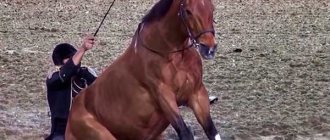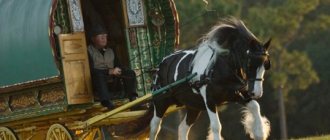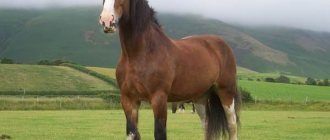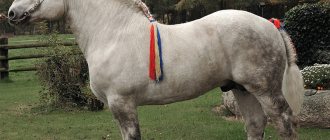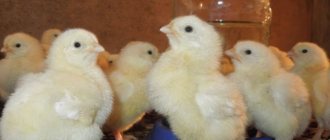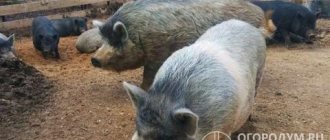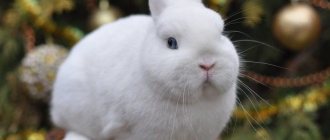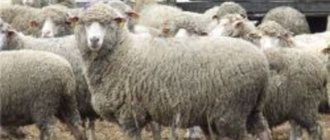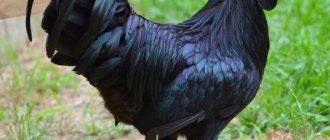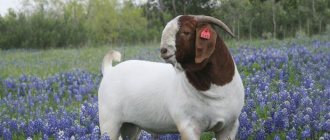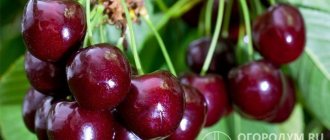The Trakehner horse is named after the Austrian village of Trakehner, where the stud farm where this breed was bred for a long time was located. Prussia 18th century needed good cavalry horses, and she got them after many years of selecting sires and selecting individuals for the desired characteristics.
History of the breed
The Trakehner stud farm, now located in Germany, was founded by Frederick I, and therefore received the name royal. The work of the stud farm was aimed at creating a breed that would combine the properties of a good horse and draft power.
The Trakehner horse was created by crossing representatives of the following breeds:
- Arabic;
- Barbary;
- Don;
- Neapolitan;
- Spanish;
- English;
- Turkish;
- Persian
This diversity of genetic material made it possible to form a set of individuals that had the desired phenotype. After this, crossing was carried out only between individuals with the desired characteristics. Of the purebred representatives, only Arabian horses were allowed for crossing.
The selection was made according to the following criteria:
- tall;
- long body;
- strong legs;
- straight and long neck;
- good-natured disposition and at the same time courageous in character;
- endurance;
- ability to carry heavy loads;
- movement speed.
Thus, as a result of selection, a good warrior and worker should have been obtained. By the middle of the 19th century. Trakens were allowed to compete in horse racing, as well as work on transporting goods.
In the second half of the 19th century. the new breed was finally formed. These large and strong horses have become popular in many countries. However, in the middle of the 20th century. this breed almost died due to fighting. When the Soviet army advanced, it was decided to evacuate the entire population of elite representatives of this breed. Most of the purebred Trakehner died on the road. However, later this breed was still preserved.
Exterior
The description of the features and characteristics of the Trakehner horse breed should begin with standard body parameters. For stallions, the average height at the withers should be from 166 to 174 cm. The girth at the chest is about 195 cm, at the wrist - 22 cm.
Mares have slightly smaller parameters. The height at the withers is 163 cm, the chest girth is 193 cm, the wrists are 20 cm. The average stallion weighs about 500 kg, the mare is 50-60 kg lighter.
The general description of the exterior is as follows:
- the body is powerful, muscular;
- croup oval;
- the chest is wide;
- the head is graceful, dry, regular in shape;
- wide forehead;
- eyes deep, shiny;
- profile straight or slightly concave;
- the neck is straight, cone-shaped, strong, of medium length;
- high withers with well-developed muscles;
- legs are strong, correctly positioned and shaped;
- The hooves are wide, large, and regular.
These characteristics indicate that horses of this breed have well-developed muscles. Particularly noteworthy is the wide neck at the base and powerful muscles in the croup area. This indicates that Trakehnens are capable of carrying large and heavy loads.
A wide range of colors is allowed. The color is most often black, bay, gray, red. Sometimes roans and caracas are found.
Breeding horses must be branded. This breed has a special mark in the form of elk antlers.
This breed is characterized by smooth movements, which creates comfortable conditions for the rider. In addition, these strong animals jump well and high, which was once valued in cavalry and is now valued in sports competitions.
Despite the ability to run fast and carry heavy loads, these horses suffer from joint diseases. There is also a high risk of developing a hernia.
Characteristic
The documents indicate that the founding year of the Traken breed was 1732. It was then that a description was made of the appearance of the horses, which are called Traken. All individuals of this species should have an elongated body with good proportions. The head is neat, quite large, the back of the head is long, and has a wide forehead. Horses have expressive eyes, a medium-length neck, quite flexible and smoothly curved.
The shoulder blades are very powerful, set with a slight slope. The chest of horses differs in width and depth of seating. Mares and horses have a massive croup and withers of impressive size, with well-developed muscles. In general, the entire body has a well-developed muscular skeleton, including the back. The legs are short, rather medium-sized, muscular and quite strong, with an elegant shape. The tendons stand out and there are no brushes on the hooves.
Females of the breed can reach 160 centimeters at the withers, stallions – 170 cm. On average, a horse’s weight ranges from 440 to 550 kg. By color they are as follows:
- gray;
- blacks;
- bay;
- redheads.
When a horse is in motion, its gait is very light, even if it has to carry a rider. The breed can be used for any equestrian sport, namely:
- barriers;
- flat race;
- cavalry;
- playpen;
- steeplechase.
This breed excels at obstacles, as the horses can jump quite high, despite their small stature. To date, the recorded record is 2 meters and 25 centimeters. The breed is often bred to work in rural areas, as it is tireless and perfectly performs assigned tasks. Those individuals that have passed the selection and are considered purebred must have a corresponding mark on their left hind leg. It must be said that there is also a small classification within the breed.
- Prussian. This horse has excellent speed characteristics when galloping. Such animals are very playful and maneuverable, so they are bred exclusively for sporting purposes. These horses are not only very jumping, but also obedient, they learn quickly, which is why they are very popular. Beautiful appearance and elegance during movement make performances with representatives of the breed spectacular.
- Working. Such trakens are precisely those individuals that originated from those imported into Russian territory after the war. They were actively used in agricultural work, so over time they developed all the necessary skills and power. To improve the quality of the working horse, the horses were crossed with previously used heavy draft horses; as a result of such selection work, ungraceful and slow-moving, but hardy animals were obtained. A young mare can easily carry large loads and plow the land.
Character
Since this breed was originally bred for the cavalry, all its representatives had to have an independent and courageous character. Otherwise they would not be able to fulfill their military function. This character of a fearless and brave warrior has been preserved in modern representatives of the breed. In our time, this character has made it possible to successfully use Trakehner in sports fights.
War horses are poorly adapted to peaceful work. The “authors” of the breed took this into account, giving the German horses the character traits of agricultural workers. The result is not only brave warriors, but also easy-going workers with even-tempered personalities. Skillful training can turn these cavalrymen into friendly family horses.
Content Features
With all the advantages of this breed, Trakehner horses also have disadvantages. This beautiful horse has weak immunity, which is typical for many purebred animals. This is due to the genotype, in which the threshold for the diversity of hereditary information is reduced. The predominance of recessive traits negatively affects immunity, which is a consequence of long-term selection and inbreeding as a way to consolidate these traits.
They try not to keep these horses in a herd, since the onset of infection quickly spreads to all individuals. However, it is not worth completely isolating Trakehner horses from their own kind, since this has a bad effect on their working properties. Horses that do not have contact with the herd lose such a character trait as competition. In addition, isolation can give rise to aggressiveness as a consequence of unfulfilled instincts.
It is best to keep these horses in a separate stall with all the “conveniences”, but allow them to periodically be in a small herd. If you keep the animal clean by regularly disinfecting the stall, then the risk of infectious diseases can be minimized.
Horses' feed and water should always be fresh. This means that old food needs to be removed from the stall every day, and the water needs to be changed several times a day. At the same time, feeders and drinking bowls should be washed daily.
Trakehnens are resistant to temperature changes. They withstand frost and heat well. However, stable temperature conditions should be created in the stable. This will prevent colds from sudden temperature changes. These horses don’t like drafts either. Such wind is harmful to any mammals kept in stalls.
The scourge of stables is fungus, so these areas should always be dry. Manure needs to be removed daily, and the straw bedding needs to be changed every few days.
Each horse needs to be bathed at least once a week. In winter, this should be done in a heated room; water at room temperature is used for this. It is best to wash horses with laundry soap containing 72% detergent. This product disinfects well and lathers well. In addition, it strengthens blood vessels and activates blood circulation. Before competitions and exhibitions, when the horse's body should be especially attractive, a special shampoo is used.
A special feature of this breed is its small stomach, so horses need to be given food little by little, but often. There should be enough food so that the animal eats it completely, but does not overeat. The feed must contain products that stimulate intestinal function.
Horses of this breed do not tolerate sudden changes in diet, so the transition to another feed should be gradual. Animals should not be allowed to exercise immediately after feeding. This can be done no earlier than an hour after eating.
The Trakehner diet consists of hay, grain crops, mainly oats and barley, as well as vegetables - potatoes, beets, carrots, pumpkin. You can use sunflower cake, feed yeast, and vitamin supplements.
Feeding
Nutrition of the Trakehner horse breed is a separate topic. In this case, it is important to follow the basic recommendations:
- Despite the fact that horses of this breed are predominantly large in size, they have a small stomach. For this reason, they need frequent feeding, but in small portions.
- It is required to regularly ensure that animals have clean water and drinking utensils. It needs to be washed after every meal.
- To satisfy the chewing abilities of horses and the proper functioning of the gastrointestinal tract, it is imperative to include forage in the diet.
- A new product should be introduced into the horse’s diet gradually. This is how the stomach gets used to an unusual dish.
- Give animals only high-quality feed. Do not feed horses foods that form mold, as this can lead to infection with infectious diseases.
- The diet is prepared based on physical activity.
- After eating, horses need rest - this promotes better digestion of food. You cannot immediately load horses with physical activity.
To maintain the health of Trakehner horses, it is necessary to regularly examine them, paying attention to the genital cavity.
The farmer will need to brush the horses’ teeth, file down pointed specimens, and feed the animals with remedies against worms and other parasitic microorganisms.
Be sure to contact a veterinarian if you notice that the horse’s behavior has changed significantly and his health has worsened.
Vaccinations
Animals must be examined and vaccinated by a veterinarian twice a year:
- After returning from summer pastures.
- Before going out to spring pastures.
Recommended vaccinations:
- from anthrax;
- from dermatophytoses;
- against flu;
- against leptospirosis;
- from rabies;
- from tetanus.
Disease Prevention
In order for the horse to get sick less, it is necessary to take certain preventive measures, which are presented:
- regular cleaning of the premises and daily change of bedding to avoid the development of harmful microorganisms;
- regular nutrition and observance of feeding frequency;
- monthly examination by a veterinarian to identify possible health problems and provide timely treatment;
- providing individuals with complex supplements, in the form of a vitamin and mineral complex to enhance immunity;
- maintaining the hygiene of horses, regularly bathing them, caring for hooves, teeth and fur;
- timely vaccination as recommended by a veterinarian;
- using high-quality feed, previously checked for the presence of foreign objects, impurities of dangerous plants, rodent excrement, traces of rot, mold;
- ensuring quiet rest at night and regular breaks during difficult work;
- maintaining the required microclimate in the room where the horses live.
Breeding in Russia
Immediately after the war, work began on breeding the Trakehner horse breed in the Soviet Union. This project had three goals:
- restoration of the number of purebred representatives of this breed in connection with their death in Germany;
- use in cavalry and the national economy of the country;
- breeding new breeds based on the achievements of Western horse breeders.
However, the latter goal was soon abandoned, focusing all attention on breeding Trakehnens and improving their qualities. Particular attention was paid to the character of these horses. The restoration of the breed in Europe took place with an increase in sporting qualities, which entailed the selection of individuals with a fiery disposition. These horses have the will to win, but they are difficult to train and control.
The Kirov Stud Farm was the first organization to host Trakehnens in 1945. Of all the imported stallions, only 15% were selected for breeding work. They became the basis for restoring the genotype and increasing the population.
This plant became the basic organization in the distribution of horses of this breed throughout the Soviet Union. After the collapse of the USSR, the once united Trakehner population became scattered.
However, subsequently, on the basis of the Kirov Stud Farm, the Trakehner Horse Breeding Association was created, which united all owners of horses of this breed. Since 1997, this association and the Kirov Stud Farm have become full members of an international organization uniting all Trakehner breeders. From that moment on, the plant received the right to put a company mark in the form of elk antlers.
As a result of the active and effective activities of the Kirov Stud Farm, all Trakehnens began to be divided into German and Russian. Moreover, the latter are in no way inferior to those horses that were bred in the homeland of the breed.
Usage
These horses are most valued for their athletic achievements. In addition, they are a decoration for home stables. Agriculture now no longer has a great need for draft horsepower. However, Trakehners have proven themselves well as a vehicle where it is not possible to travel by car.
They are successfully used for expeditions and tourist excursions in the mountains. With proper training, they can be recruited to work in mounted police and border troops.
Trakehnens are susceptible to three genetic disorders:
- Cerebellar abiotrophy is a neurological disease that usually affects foals before six months of age. Affected foals are at increased risk of accidents and should not be ridden.
- Severe combined immunodeficiency syndrome affects two types of white blood cells in foals. Affected foals may experience symptoms such as pneumonia, colic and weight loss, and usually die within the first six months of life.
- Lavender foal syndrome is an inherited disorder that causes neurological problems such as seizures, hypertensive limbs, and paddling movements of the legs. This condition is fatal.
All these disorders can be detected using DNA analysis.
Sports achivments
Horses of this breed are actively used in sporting competitions. Because they are excellent horses and excellent jumpers, they are used in equestrian sports such as dressage, show jumping and eventing.
The most famous record holder of this breed is the Russian stallion Ash. Olympic champion and master of sports Elena Petushkov performed there.
Other Trakehner sport horses of Russian origin have also achieved great success. Particularly famous are horses such as Biotope, Prince, and Chlorophyll.
The stallion Abdullah also achieved great success, becoming the US champion at the 1984 Olympics.
Trakehner horse cost
The price of horses of this breed depends on a number of factors: age, exterior, pedigree, level of sports training. The price range ranges from 100,000 to 1,500,000 rubles.
So Trakehner horses are not only popular in Russia, but also affordable. The main thing is to create comfortable conditions for them in accordance with their needs. The problem is that a horse is not a car that can sit in a garage and not incur any costs. The horse needs constant attention, care and expense.
Our days
In the modern world it is believed that there are no good horses left in Russia. But livestock specialists are ready to prove otherwise. Thus, in 2022, a Russian-bred stallion was added to the breeding composition of the Trakehner Union. He successfully passed the appropriate tests, showed results in sports and earned the right to be on the breeding list. And his story began with a simple thing. At birth the stallion was named Parquet. Place of residence was PKF Traken. It was there that his future owner Evgenia Vysotskaya looked after him. According to her, the horse was short and plump, but the trainer considered him promising in the sport. When purchasing the Parquet, it was renamed Perfect, which translates from German as “magnificent.”
